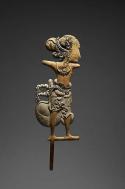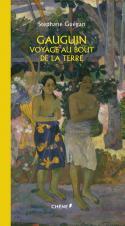Art Of The Day Weekly
#488 - from 26 October 2017 to 1 November 2017
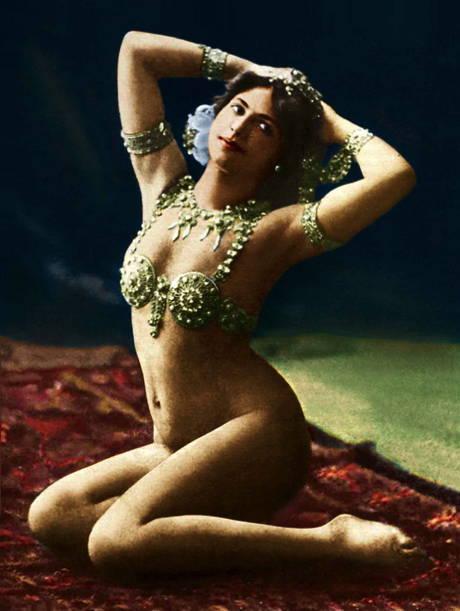
Photograph of Mata Hari, courtesy Fries Museum, Leeuwarden.
IN THE AIR
Mata Hari, the spy who came from the North Sea
LEEUWARDEN – Her name is known worldwide, and her life is among the most spoken of in a universe that has its share of legends. But no one really knows where this woman, arrested in the elegant Elysées Palace in Paris and shot on 15 October 1917 in Vincennes, and accused of spying for the enemy, was from. Her name sounds Japanese, her qualities as a Middle East dancer led us to believe she had Indian or Javanese origins, and - to add one more mystery – she was married to a Scottish MacLeod! Actually, Mata Hari was simply Dutch. Her native town will be the European capital of Culture in 2018, together with Malta. No one will pronounce the name of the small town in the Frise region any better, but at least we now know that she was rocked to sleep as a baby by the winds of the North Sea. Indeed, Margaretha Zelle alias Mata Hari was born there in 1879, the daughter of a hat maker. An exhibition, in the beautiful Fries Museum inaugurated two years ago, awakens the myth. It is difficult to unravel the truth from all the lies or fables that surround this woman, who had a number of affairs -it is rumored even with Céline in London-, who fascinated the severe Emile Guimet, allowing her to give some rather daring shows in his museum with the same name. Last but not least, a movie was made in which Greta Garbo played the main role and of course contributed to enrich and immortalize the legend. The file the museum presents on her includes photographs, calling cards from the Rothschild or from princess de Croÿ, her personal diaries, a great number of letters, and in particular to her daughter, surprisingly named Non, the announcement of a nude show at the Palazzo Barberini, the minutes of the interrogation by captain Bouchardon, and her death penalty pronounced by the war council. It is very wide, but it does not necessarily give us more proofs of her guilt. But actually, does anyone really care?
• Mata Hari, the Myth and the Maiden at the Fries Museum, from 14 October 2017 to 2 April 2018.
• See on the museum website the excellent blog of Hanneke Boonstra.
• We have also learned of the future construction of a spy museum in New York, designed by architect David Adjaye.
EXHIBITIONS
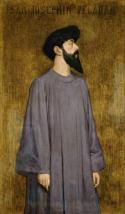
Alexandre Séon, The Sâr Joséphin Péladan, 1891. Oil on canvas, 132.5 x 80 cm, Musée des Beaux Arts, Lyon.
The spirit of the Rose-Croix
VENICE - From 1892 to 1897 the galerie Durand-Ruel in Paris organized the annual editions of a rather strange fair, that of the Rose-Croix. It was a product of the arcane brotherhood with the same name, directed by the eccentric Joséphin Péladan, a sort of bearded prophet, and brought together artists motivated by a mystical, medieval, and symbolic arsenal that aimed to be a sort of parallel path towards knowledge. This ephemeral movement was voluntarily hermetic, and produced works inspired either by antique mythology –Orpheus- or by medieval legends (in the wake of Wagner) or by the Christian mysteries. Aside from Khnopff or Toorop, the public in general knows little if nothing of these artists. The exhibition invites the viewer to discover them in an atmosphere that is archaic, sometimes adapted to the modern world of the industrial plant and of work. While more is currently known now about Alexandre Séon, through a number of recent retrospectives, there is a lot to be done for Charles Maurin, Marcel-Berronneau, Ville Vallgren or Rogelio de Egusquiza. Even their strange and poetic names are an invitation to a complete change of references.
• Simbolismo mistico. Il Salone de la Rose+Croix a Parigi. 1892-1897 at the Peggy Guggenheim Collection, from 28 October 2017 to 7 January 2018.
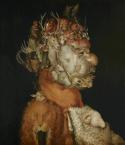
Giuseppe Arcimboldo, The Earth, oil on panel, 70.2x48.7 cm. Princely Collections, Vienna, Lichtenstein.
Arcimboldo, a breath of fresh air
ROME - One could be more than happy to simply visit the famous palazzo Barberini for its collections (as a national museum of antique art) and for its famous ceilings painted by Pietro da Cortona. For a few months though it offers a new reason: a new, small retrospective by the very mediatised Arcimboldo (1526-1593). The works by the champion of fruit puzzles are rare and difficult to bring together, consequently a sample is chosen here - some twenty works of art have been brought in nevertheless from eleven different museums. An important supplement shows the context of Mannerist painting and drawings of natural history, by Ulisse Aldrovandi in particular. While Summer and Winter have been seen recently, the Earth had not been shown in over twenty years. Reversible portraits, ridiculous portraits, portraits in seasonal vegetables: Arcimboldo has heirs even today, such as Vik Muniz or Bernard Pras, who adapted the style to contemporary themes.
• Arcimboldo at the Palazzo Barberini, from 20 October 2017 to 11 February 2018.
MUSEUMS
Vienna, a window to the world
VIENNA - Over the past years, ethnological museums have been deeply rearranged, often accompanied by changes in their names, in order to seem more politically correct. Some persons regret that these institutions no longer have much in common with the atmospheres of crypts or chapels of spirits of the former kunstkammer or of the mysterious galerie d’Ethnographie at the Trocadéro in Paris. Right after the quai Branly museum and before the very awaited Tervuren museum near Brussels (in June 2018), now is the turn of the largest Austrian institution in this field. Three years of works have allowed whole collections to be redeployed, to place them in a perspective that is more critical, and to use modern tools to their fullest. While the museum did not officially open in a dedicated building until 1928, its roots are much older: in 1806 it was integrated into the cabinet of natural history, and much earlier, a few of the masterpieces of its collections had already been proudly exhibited by Emperors Rudolph II in Prague or Ferdinand II at the castle of Ambras. Two surprising funds stick out from the rest and deserve to be pointed out: the 253 objects from the collection of navigator James Cook, bought in London in 1806, and the nearly 15 000 objects and photographs gathered between 1892 and 1893 by Archduke Francois-Ferdinand during his trip around the world. He is more known for having been murdered in Sarajevo in 1914.
• The Ethnological Museum (Weltmuseum) will open to the public on 25 October 2017.
BOOKS
Gauguin, in praise of wanderings
To flee, to always flee, to flee “the atmosphere of hydrogen gas and molasses” as Théophile Gautier used to say so nicely. To flee the stifling Salon, to flee his job as a stock market agent, to flee his family, his five children and his rigid Danish wife (“freedom is to abandon one’s family”, as Nietszche claimed). More than an Impressionist, or a Nabi or even a Symbolist, Paul Gauguin (“P. Go”, as he sometimes liked to sign) is from the school of fugitives! This book has the pleasant vertical form, a hand fan in some ways, a screen in others, and it follows the little boy from Notre-Dame-de-Lorette, where he was born in 1848, who was able to break away from the Right bank in Paris to sail off to Rio, to Martinique, and to Peru. He would gladly have chosen the latter as his adopted country – the country of his adored grandmother, Flora Tristan. But, as we know, he did not stop there, and instead sailed on further in space, to Tahiti, where he earned his living by doing the portraits of the daughters of the lawyers in Papeete, then off to the Marquesas Islands, where he died as an old, sour anarchist, but who enjoyed the pleasures of life. The author –whose name strangely resembles that of the painter’s- of course, refers to other trips, less distant but just as decisive, to Pouldu or to Arles for example. These trips also contributed to mold the huge comings and goings of modern art.
• Gauguin, voyage au bout de la terre, by Stéphane Guégan, Chêne, 2017, 192 p., €29.90.
OPENINGS OF THE WEEK

LAURE PROUVOST
26 October 2017 - PARIS - Galerie Nathalie Obadia
Looking at you looking at us: a reflection on the power of images

